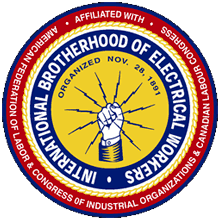January 21, 2014
By Steven Wishnia
Local 1199SEIU’s health benefits would be the envy of anyone trying to sign up for a silver or bronze plan on the on-line health exchanges. Instead of facing copayments of $35 or 50% after the deductible, the more than 400,000 people covered by the union’s plans pay $10 or less to see a doctor.
The union has five separate health plans, says Mitra Behroozi, executive director of the 1199SEIU Benefit and Pension Funds since 2004. The largest, the National Benefit fund, covers more then 250,000 people—110,000 workers in nonprofit hospitals, nursing homes, community-based health-care facilities, and drugstores, plus about 150,000 family members. The Greater New York fund covers about 28,000 workers in the for-profit nursing-home industry, along with their dependents. Three smaller plans cover home attendants in Medicaid-funded programs, home health-care aides who work for private agencies, and registered nurses. The union also provides benefits to about 50,000 retirees, mostly supplemental prescription-drug coverage for people on Medicare.
In the National Benefit fund, in-network care costs workers nothing, says Behroozi. In the others, it costs very little.
The union can do this, she says, because its three largest plans are “fully self-insured and self-administered.” Instead of buying insurance from a for-profit private company, it negotiates directly with providers and vendors.
“We do direct contracting of providers across the board, from hospitals to doctors to labs. We use a pharmacy benefits manager for prescription drugs, but we manage them pretty tightly,” Behroozi says. “We go to various vendors and say, ‘for 400,000 lives, show us what you can do.’ We’ve also bid out laboratory and radiology contracts, exclusive network contracts where we say, ‘What kind of pricing are we going to get from you, given that this is the volume that we’ll be able to deliver?’”
This helps keeps the plans’ average costs low enough so they probably won’t be affected by the Affordable Care Act’s tax on so-called “Cadillac plans,” those that cost more than $18,500 for individuals and $27,500 a year for families, that will go into effect in 2018. At about $13,000 a year for family coverage, Behroozi says, “our average cost is low enough right now, that even if you multiplied it, compounded it by a really high rate of increase, we would not be there in 2018.”
As Taft-Hartley multiemployer plans, 1199’s plans have had to pay some additional fees under the Affordable Care Act, but many of the law’s requirements, such as ending annual limits on benefit payments “redound to our members’ benefit,” Behroozi says. “We’re very happy not to have to tell people, ‘Sorry, but you’ve maxed out on your benefit.’”
The union is now looking at ways to expand coverage for part-time workers, who now generally get only partial coverage. The complication here, Behroozi explains, is that if someone gets insurance with “minimal essential coverage” from their employer—medical, hospital, and prescription benefits, even with a high deductible—they’re not eligible for subsidies on the exchanges. So now, she says, “we’re working on dovetailing our coverage,” such as by offering things like vision and dental coverage, which are expensive or hard to get on the exchanges.



